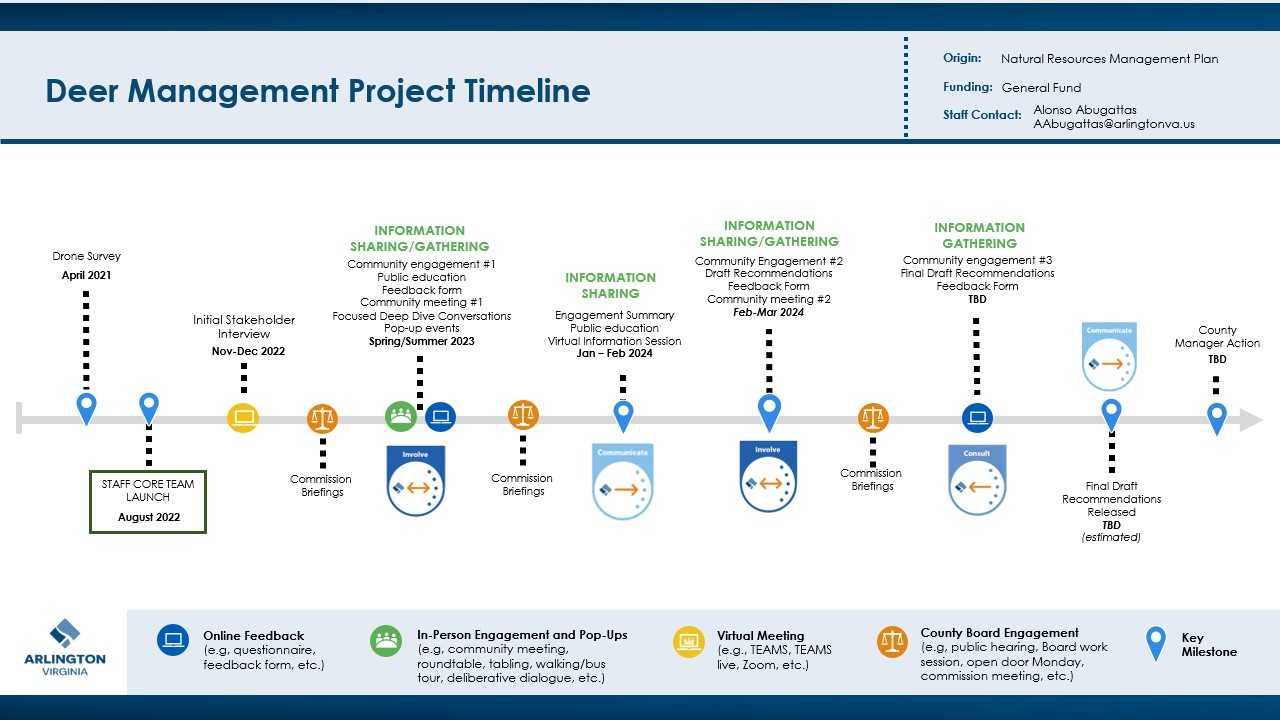
Arlington County will kick off the New Year with the next phase of engagement on its forthcoming plan to manage its deer population.
A study found two years ago that Arlington’s deer population exceeds healthy levels, with the county’s forested areas home to about 20 and 39 deer per square. About 1.5 years ago, the Dept. of Parks and Recreation began considering a management plan in response.
Today, the department is considering three ways to lower the population, including sharp-shooting, citizen hunting and sterilization. Another option, fencing off trees, would focus on tackling a purported effect of “overbrowsing,” when large deer populations eat too much of the forest understory.
Some naturalists welcomed the culling options presented. The Animal Welfare League of Arlington, which provides animal control services for the county, meanwhile, champions non-lethal options and has criticized the process so far as “one-sided.”
Early next year, the parks department will host a virtual information session to introduce a second round of community engagement on potential deer management strategies, according to a new timeline it published today (Monday).

Residents can also expect a new feedback form and have the chance to participate in more community meetings before DPR crafts draft recommendations, the timeline says.
These recommendations will be the subject of a third round of public engagement — including another feedback form — before DPR drafts and releases final recommendations.
At some future point yet to be determined, County Manager Mark Schwartz will take action on the final recommendations, per the timeline.
Although this work continues well into 2024, some local environmentalists say the county should have strengthened its discussion of deer management in a forthcoming county master plan governing stewardship of trees and natural resources.
“The role of high white-tailed deer numbers and invasive plants should be more clearly articulated in the environmental degradation of Arlington’s forested areas and included in the plan’s priorities,” Climate Change, Energy and Environment Commission Chair Joan McIntyre wrote in a letter to the Arlington County Board this fall.
“Reducing deer numbers and treating invasive plants are both critical to restoration of our natural areas,” she continued.
The Forestry and Natural Resources Commission expressed its concern that the plan did not treat overbrowsing specifically as a forestry management priority.
“Independent scientific research has ‘noted that tree regeneration failure is widespread and that without active deer management, ecological health of Arlington County’s natural areas will likely continue to degrade,'” writes commission chair Phil Klingelhofer.
The Planning Commission is set to review and vote on the final draft of the Forestry and Natural Resources plan tonight (Monday), teeing up the County Board for a vote on Dec. 16.
The Board authorized this month’s hearings in October. At the time, Board member Takis Karantonis noted he would spend the next two months talking about deer, among other topics.
“There is no question… we are out of balance, we have species that are abundant because we have killed or eliminated factors that balance their population,” he said at the time.
Of deer, the draft plan says “many” Arlingtonians note that expanding deer populations are having “harmful impacts.”
“General sentiment favors striking a balance between managing negative impacts of wildlife while also protecting habitats that benefit Arlington’s ecosystem,” the plan says.
It resolves to inform management with surveys on existing and emerging pests and “high-impact organisms.” By way of example, the plan highlights the 2021 deer count that determined Arlington County had unhealthy deer population levels.
Going forward, “such surveys will be critical to identifying threats early, informing management efforts and can tie into education campaigns,” the plan says.

